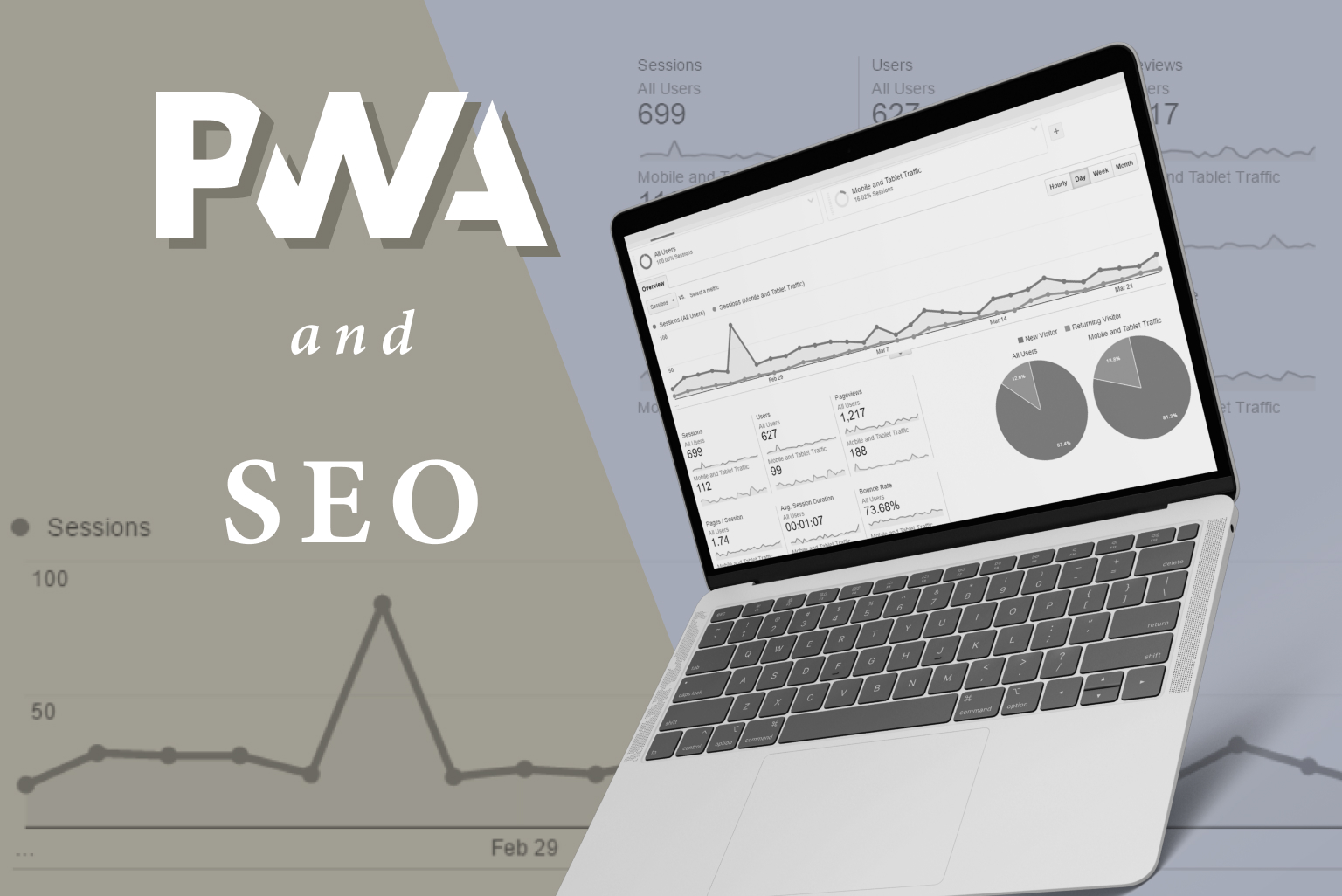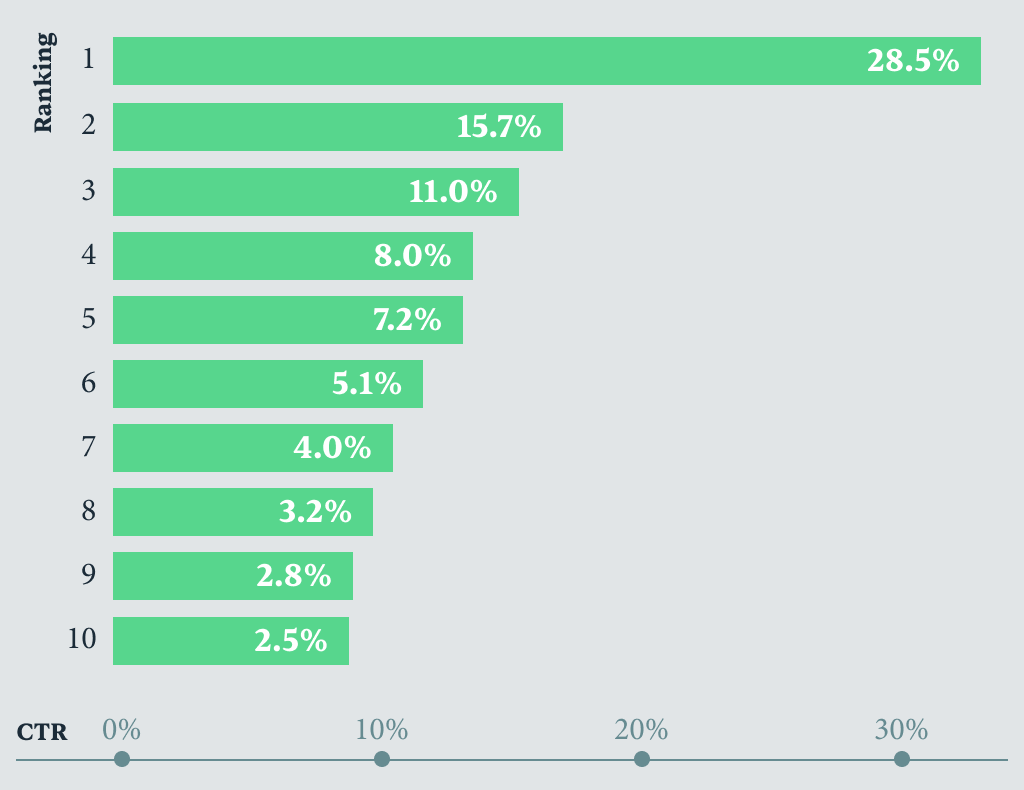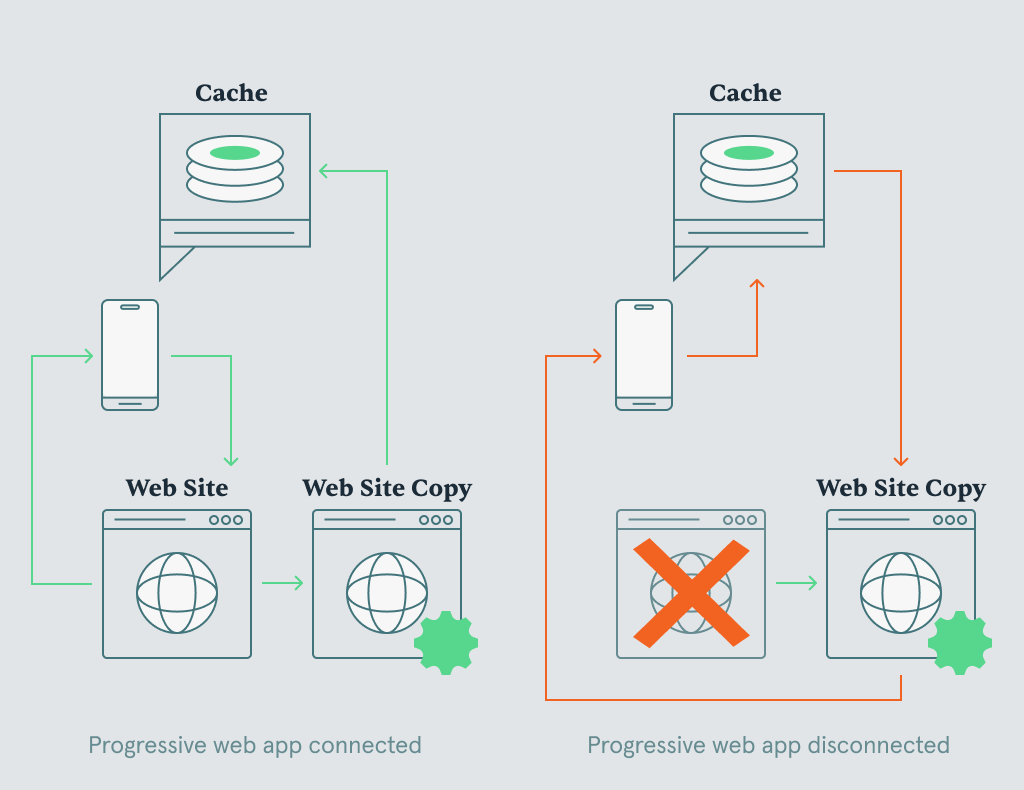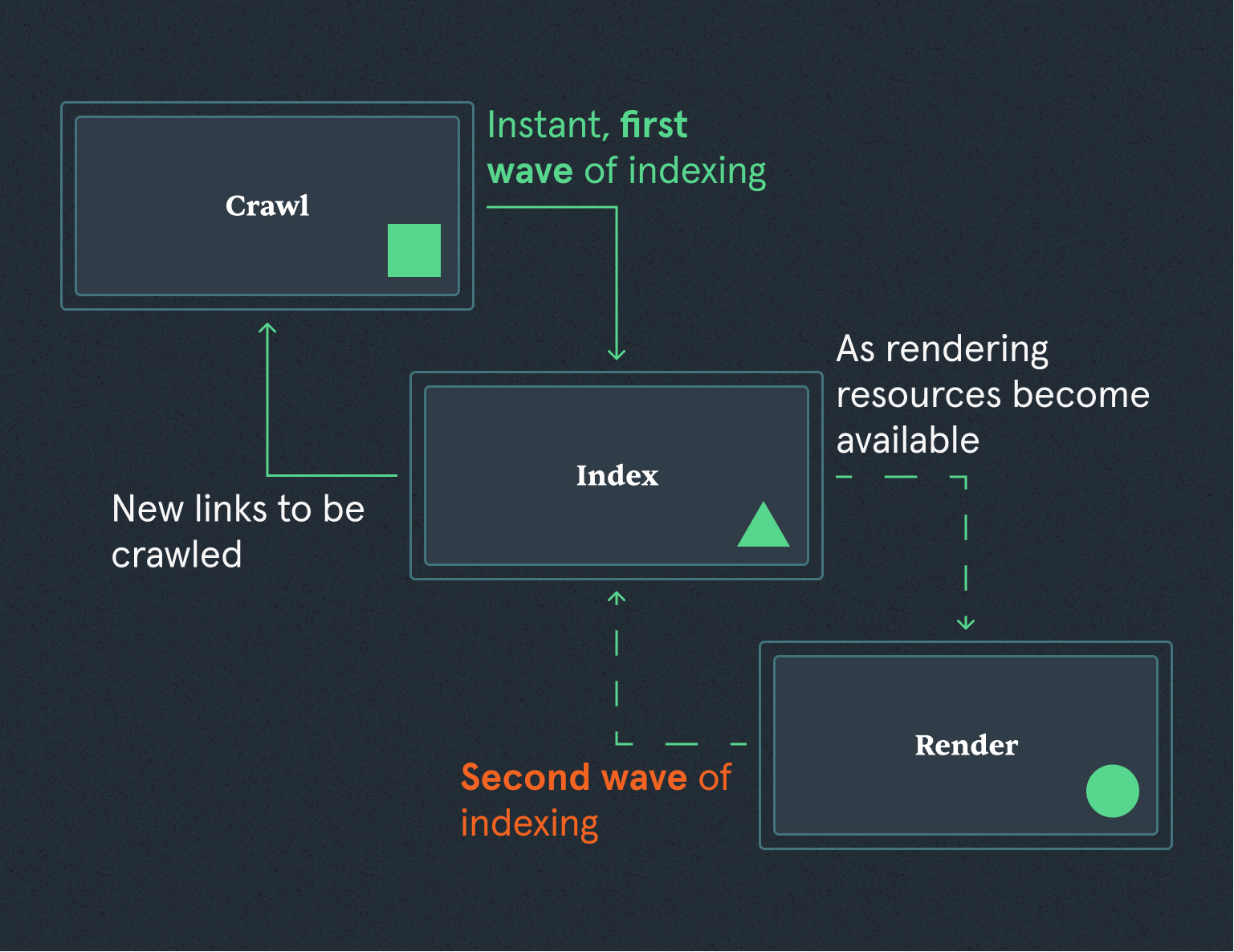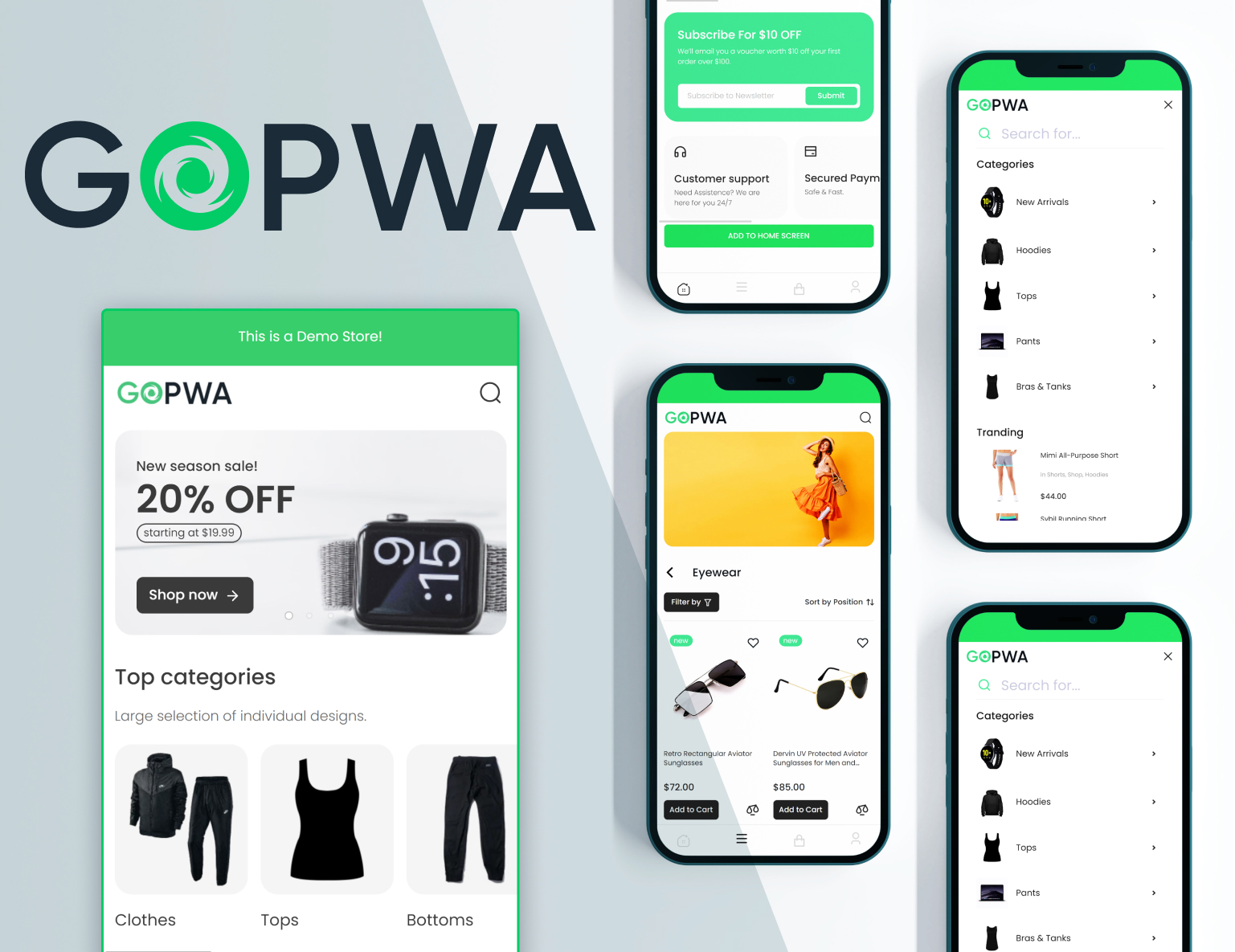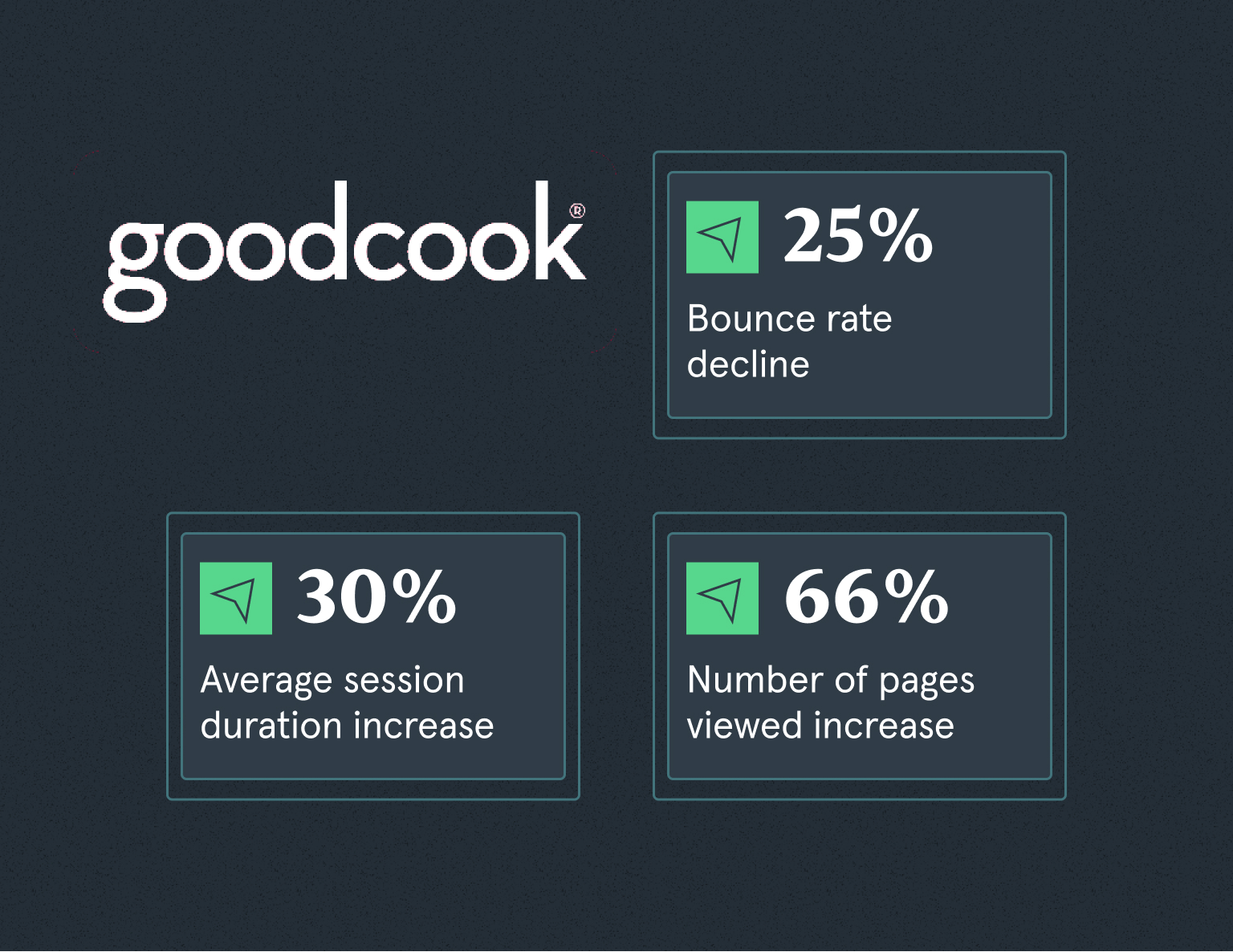Will PWA improve my SEO?
That’s the question we get most from companies exploring PWA technology.
In this article, we explore how these two concepts work together.
You’ll learn how PWA impacts Google ranking, why big companies like AliExpress, George, and Lancôme use PWA and when we recommend building a PWA instead of a Magento 2 website.
We’ve covered the following questions:
- Why does SEO matter for eCommerce businesses?
- What factors impact SEO?
- What is PWA & how does it work?
- What are the four pillars of PWA?
- Can Google crawl progressive web apps?
- Is PWA for SEO or not?
- What are the key steps of PWA optimization for SEO?
Dive right in to learn about SEO for progressive web apps.
Development Get a robust PWA
Supercharge your eCommerce efforts with superb UX and ‘superfast’ speed. Build an eCommerce PWA from scratch or save time and money using GoPWA Storefront.
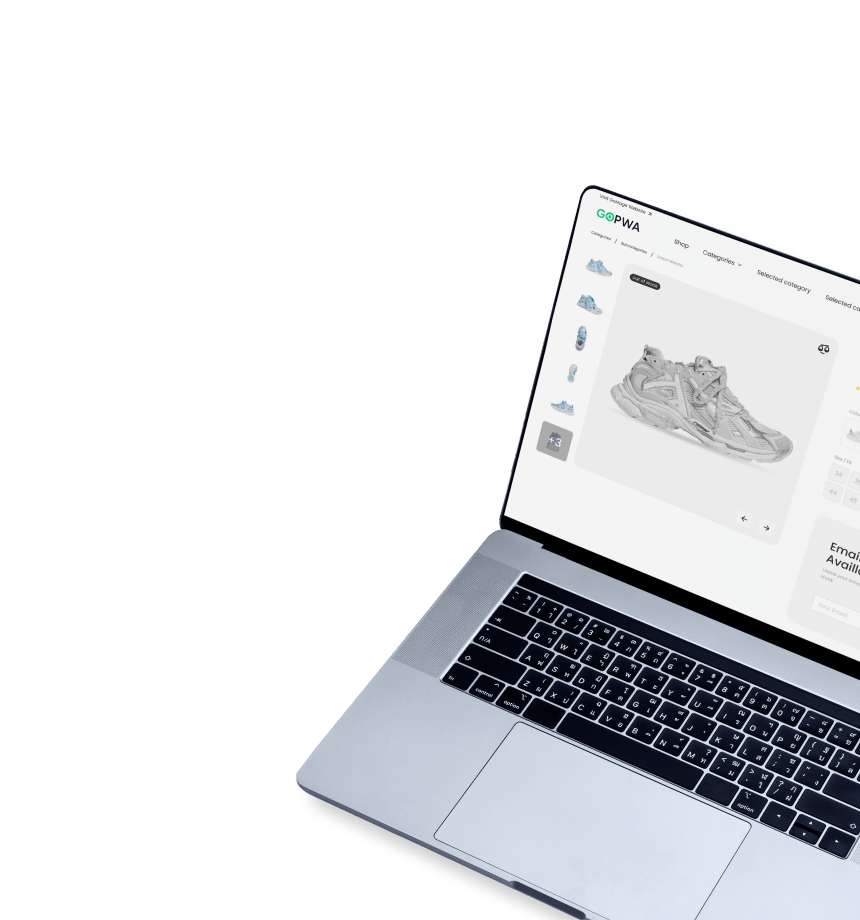
Why Does SEO Matter for eCommerce Businesses?
Let’s get it straight.
Without SEO, your website won’t show in Google. You won’t get any visitors and customers. You’ll have to spend thousands of dollars daily on advertising and other marketing efforts. After all, around 50% of customers in the USA start their online shopping journey with a search engine.
If done right, Google will become the primary source of traffic and potential customers. We won’t lie; SEO is an ongoing process. You can’t do it once and enjoy the benefits forever. You must constantly work on your website to make Google love it. But it’s more than worth it, as you get a lot of benefits.
First places on Google
Being on the first page of Google means that customers are more likely to find your eCommerce store. Around 29% of people click on the first link in Google results. Average CTR drops significantly after the first position. The second and third positions get a 15% and 11% CTR, respectively. No wonder why companies are fighting fiercely for the first position, right?
Lower marketing expenses
You can save money on other marketing activities, such as social media or Google ads. Ads bring customers as long as you pay for them. Conversely, SEO has a long-term impact and can bring new visitors years after you’ve published a blog post or landing page. Terakeet states that SEO can reduce the cost of customer acquisition by 87.41% on average compared to digital advertising.
Higher lead quality
You can improve lead quality by presenting customers with information that will impact their decision. Often, eCommerce websites get clicks from people who aren’t ready to make a purchase. With SEO, you can identify the pain points of customers and offer them products to address the pains precisely. In the end, they will be more ready to spend money at your online store.
Let’s see how PWA and SEO work together.
Key Factors That Impact SEO
There are hundreds, if not thousands, of signals that Google analyzes when ranking websites. Let’s look at some of the most important ones that can either make or break your SEO efforts.
- Website security – using an HTTPS encryption and SSL certificate is a must-have today. Google flags websites without proper protection as untrustworthy and warns users from visiting them.
- Site crawlability – Google needs to scan a website to review content and determine its ranking potential. If the search engine can’t access your site, it won’t appear in search results. Make sure to submit a sitemap to Google and other search engines, and use robots.txt to guide Google to pages that it should rank. You can check the indexing status in the Google Search Console.
- Loading speed – faster websites rank better in Google. That’s the fact! Make sure your website’s speed is great across desktop and mobile. If there is a need, speed up Magento to ensure it. You can use PageSpeed Insights for website speed checks.
- Mobile-friendliness – all websites should be mobile-friendly. You probably get around 50% of traffic from mobile. If it’s not optimized for smartphones and tablets, users won’t be able to enjoy a great customer experience and Google will penalize you for it, moving the website lower in search results.
- Customer experience – Google uses a number of factors to determine user experience, using such metrics as Click-Through Rate (CTR), time spent on site, and bounce rate.
Google prefers to keep information about ranking signals to itself. But the above-mentioned ones ensure that your website is built with the best technical practices while keeping users in mind.
What is PWA & How Does It Work?
So, can PWA influence your SEO?
Let’s start by looking under the hood to understand how the technology works.
Progressive web application is a technology that combines the best from both worlds – web and mobile. At first glance, a PWA is no different than a traditional website. Installability and cross-platform support make PWAs so special. You build a single PWA that acts like a website online and can be installed on any device, just like a native app.
Such functionality is possible thanks to the use of four technologies:
- Web app manifest file is a JSON file responsible for PWA installability on the home screen. The file includes information about the app, its icon for the home screen, colors, the main page to load when the PWA is opened, etc.
- Service worker is a JavaScript file that enables PWA online capabilities. The file runs in the background independently of the browser and a web page. It can intercept and handle network requests, cache or retrieve data from the cache, and deliver push notifications. As a result, PWA can display previously cached data when a user is offline.
- Transport layer security (TLS) is a prerequisite for PWA, which is responsible for data privacy and integrity. It’s only possible to deploy the service worker on a site with HTTPS installed on your server.
- Application shell architecture is responsible for fast loading speed. It’s a minimum HTML, CSS, and JavaScript code required for the user interface of a PWA. The app’s shell files are cached on the first visit and loaded from the local cache on the next visits, speeding up performance.
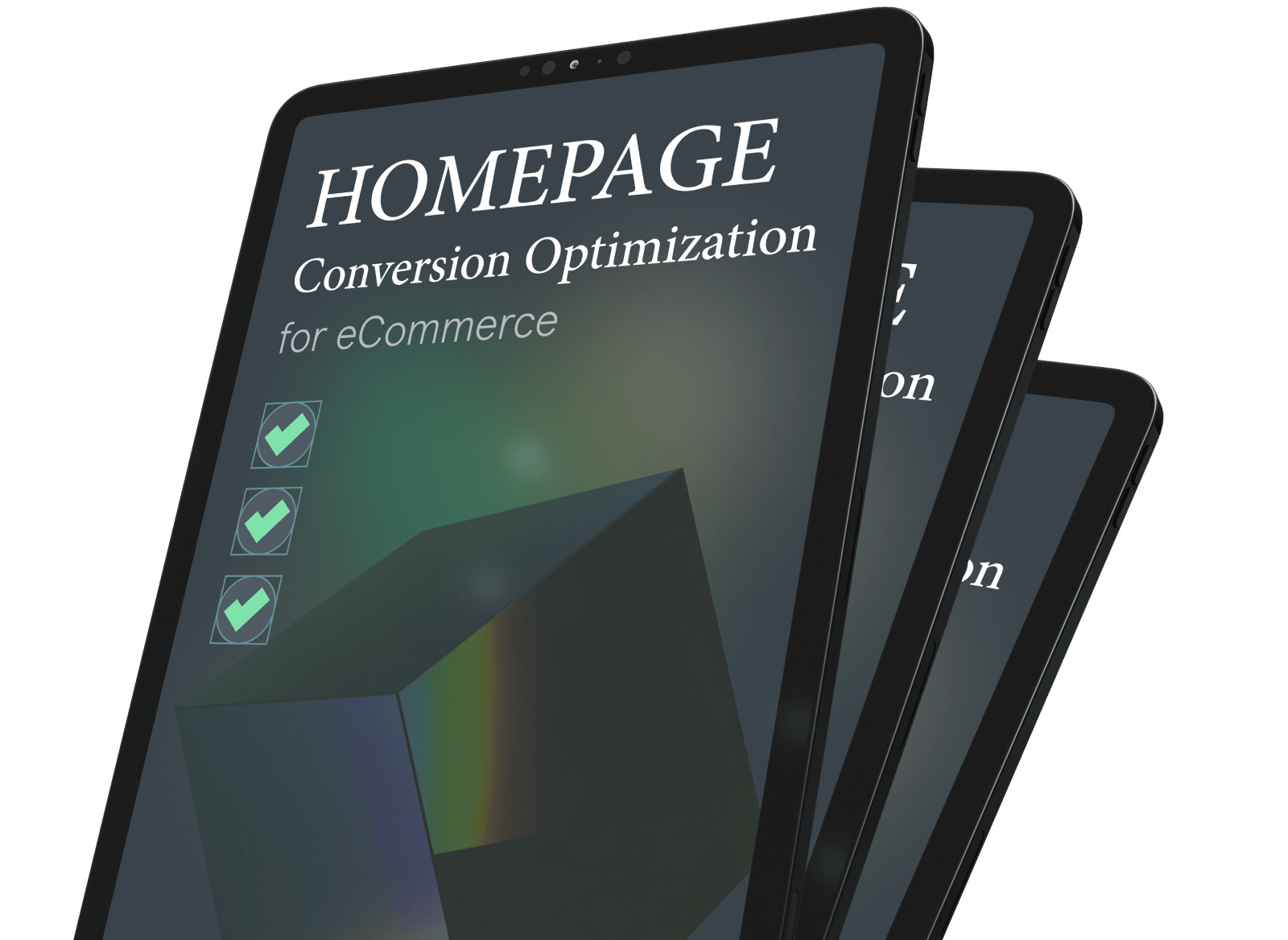
PWA SEO: Can Google Crawl Progressive Web Applications?
Rumors have been circulating that Google can’t crawl PWAs.
That’s not true! Google can crawl PWAs. But it does so in a different way.
Let us explain.
Google can render JavaScript to see website content and all the links. JavaScript rendering takes a lot of resources, as Google needs to parse, compile and execute such files. That’s why Google indexes PWAs in two stages: during the first wave, Google fetches server-side rendered content and renders client-side JavaScript during the second wave.
In some cases, the second wave of indexing can be deferred for a few days, which can impact SEO. However, it’s possible to configure a PWA so it won’t have a bad influence but will boost SEO in the long run.
PWA Optimization Checklist
It’s crucial to optimize PWA and build it following the requirements from Google to create the best possible experience. Below you can see a list of things that will help you meet all PWA SEO recommendations.
- For Google to index content, it should be placed under a URL, not a fragment specified with the # sign. The search engine doesn’t index anything beyond the # symbol, which harms your PWA SEO. You need to implement a traditional URL structure applying the SEO results. Otherwise, your PWA will undermine SEO efforts.
- CSS and JavaScript files should be accessible to search engines to render the content fully.
- If you have paginated content (content that is available after some predetermined event), it may not be indexed by Google. You can solve this issue by using rel=next/prev and the History API.
- Tabbed content might prevent Google from properly indexing it. Therefore, it’s recommended not to place the most important content into tabs to avoid situations when search engines can’t index it.
- Make sure you’re not blocking any pages by robots.txt.
- Keep the number of embedded resources on the page to a minimum. It especially applies to the number of JavaScript files that Google needs to retrieve to render the page. Search engines sometimes won’t load them all, harming your PWA SEO efforts.
- Don’t forget to update your sitemap file when any changes to your website happen. This will help Google faster find new pages and index them.
- Make sure to specify each page with a canonical URL using the link rel=”canonical” element. Doing otherwise will harm your PWA SEO, as search engines can penalize your website for using duplicate content.
- Pages of your PWA should be responsible on tablets and mobile devices and pass the mobile-friendly test by Google.
- If you serve content dynamically and show design based on the device users, you need to show the same content for customers and search engine crawlers.
- Provide metadata for the ‘Add to Home Screen’ dialog.
- Test to ensure that your PWA works great across all browsers, such as Chrome, Safari, Firefox, etc. Several tools can help you with the task, e.g., browserstack.com, browserling.com or browsershots.org.
- When a PWA is loaded, it shouldn’t use the app install interstitial.
- Make sure your PWA works fast, it responds immediately for every tap, and there are no content jumps during the page loading.
Building a PWA is not an easy task. You need to make sure it follows the best PWA SEO standards and doesn’t contradict Google’s recommendations. After you’ve built a PWA, test it across the most popular browsers, operating systems, and devices. Use PageSpeed Insights to see how your PWA performs under Core Web Vitals requirements. You can also check a checklist by Google for in-depth insights.
Want to build an eCommerce PWA? Check our GOPWA storefront, built taking into account all Google recommendations. It passes the PageSpeed Insights test and the requirements of even the most demanding customers.
PWA for SEO: Will It Make Google Love Your Store?
Can you use PWA for SEO?
The short answer is yes. The nature of progressive web applications helps them rank better in Google, as they combine a few important characteristics.
Let’s find out more about PWA SEO.
- Better customer experience
Google estimates user experience by click-through rate. The more clicks a website gets, the higher it will show in search results.
As for an eCommerce business, customers are more likely to buy if an online store provides them with a great shopping experience. The next time they need to purchase a product, they are more inclined to visit your store instead of searching for alternatives.
- Faster website speed
Faster performance is one of the reasons why companies choose PWA for SEO. Both Google and users expect websites to load fast.
Most users will abandon a mobile site if it takes more than three seconds to load. If your website fails to meet their expectations, they will be gone before you know it.
With poor performance, you won’t also be able to pass Google Core Web Vitals and hope for high positions in search results.
PWAs deliver 2 to 4 times faster page speed. Compared to its previous mobile website, PWAs can improve speed performance by up to 63%.
Our PWA storefront – GOPWA – loads 2,5-4 times faster than a standard Magento 2 or Adobe Commerce. Customers get a smooth experience both on mobile and desktop. So, if you want to improve SEO in Magento, our PWA solution is a great way to start.
- Higher engagement
Click-through rates, bounce rates and session duration impact your website’s search ranking. The lower user engagement, the less likely your website is to show in first positions in Google search results.
PWAs provide great customer experience across all devices and operating systems. Higher speed makes customers less likely to bounce without placing an order. Push notifications can be used to remind about abandoned carts, upcoming sales, and special deals. All of these features combined improve customer experience and engagement.
By implementing PWAs, eCommerce companies manage to achieve amazing results:
- AliExpress improved the conversion rate for new users by 104% across all browsers, the number of pages visited by two times, and a 74% increase in time spent per session.
- Lancôme saw a 17% increase in conversions, a 51% increase in mobile sessions overall and a 53% increase on iOS alone.
- George, a UK clothing brand, saw a 31% increase in conversions, 2x lower bounce rate, and a 20% increase in page views.
- GoodCook, a company using GOMAGE PWA, saw a 25% decline in bounce rates, a 30% increase in average session duration, and a 66% in the number of pages viewed.
Final Takeaways on PWA SEO
Building a PWA for SEO is justified, as PWAs are designed to provide the best experience across all devices and systems.
PWA implementation can bring a number of benefits to your business – from better customer experience to higher sales, stronger loyalty, and better SEO.

